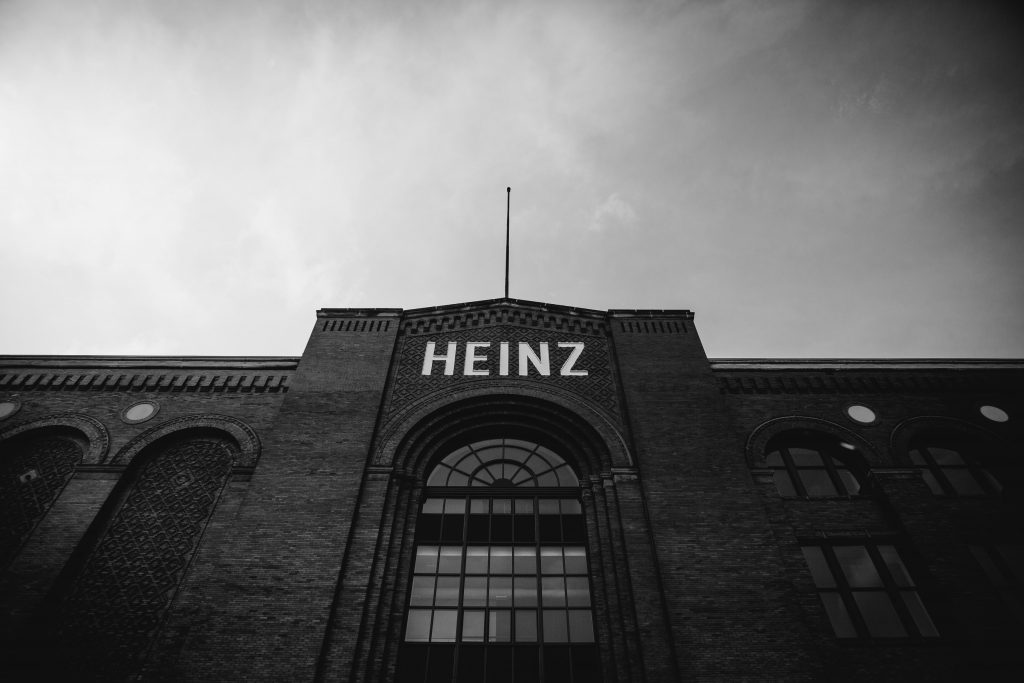A balancing act
A couple of years back, Kraft Heinz’s shares sank more than 27.5% in a substantial hit straight to the heart of the company and its competitive position following a massive write down as a result of an impairment charge of $8.3 billion to the iconic brands Heinz and Oscar Mayer.

Cost Cutting but at what Cost?!
Investors and market analysts appear to agree on the reason underlying the multi-billion plunge in the value of the two brands; the aggressive cost-cutting strategy of 3G Capital, the Brazilian private equity firm and Kraft Heinz’s controlling shareholder. This resulted in significant underinvestment in marketing and other brand enhancing activities; usually required among companies aiming to differentiate themselves from competitors and sustain their reputation in the market. This is particularly true in overcrowded and fiercely competitive markets, such as the consumer-packaged goods industry.
Kraft Heinz’s challenges at the time were better understood from a broader context. The uptake of the internet, social media and innovative software in recent years is enabling consumers to become much more well-informed and sophisticated during the purchasing process. From online specialized product ratings to social media and AI-driven reviews, new effective tools are at consumers’ disposal to help them with the buying due diligence process, and often at no cost. Amazon, Google, Facebook, Yelp or Trivago are just a few examples. A vast pool of free information about products and services is available for consumers. A consequence of this is that consumers’ loyalty to iconic brands is fading in favor of private labels with comparable, or even higher, quality.
New York University’s marketing professor and L2 founder Scott Galloway called this tech-effect a war against brand names and price premiums. Galloway argues that in the past an average product supported by good advertising was a common approach to brand building. Advertising is no longer the driving force within the value chain for brand building; capital needs to be re-allocated to other activities such as product innovation and distribution, according to Galloway. New consumer behavior towards brands is fueling the need for traditional, well-established, companies such as Kraft Heinz to rethink how they do business during the digital era and invest accordingly.
The Link Between Brand Value and Competitive Strategy
From a brand value perspective, the case of 3G’s strategic management and the impairment of Kraft Heinz’s brands highlights the double-edge dynamic of achieving operational effectiveness versus finding strategic positioning. Both underpin the value of brands, but to different extents. Brand value is the reflection of the unique attributes of businesses and their products that are perceived as valuable by consumers. The extent to which brand uniqueness or differentiation becomes valuable is primarily determined by the ability of companies to command premium prices; or alternatively the ability to sell more units at comparable prices. However, achieving uniqueness or differentiation isn’t a free ride for any company. Investments in brand building and differentiation activities at different levels along the value chain are required, e.g. procurement of quality raw materials, creating more appealing retail stores, engaging marketing activities, etc. Any set of activities that capture the unique attributes of businesses and products which are sought by consumers, and they do it more effectively, and differently, than competitors. The value of a brand is, therefore, a function of both the price premiums it generates and the costs to achieve them. Its competitive position within a market will be linked to the performance of those strategic investments throughout the value chain.
3G and The Strategic Positioning vs. Operational Effectiveness Dilemma
Two value-driving forces could collide in the quest for profitable investments in brand differentiation activities, namely strategic positioning and operational effectiveness. Strategic positioning for companies seeking brand differentiation implies incurring additional costs in adding more value to their products or services. Operational effectiveness, in contrast, consists of getting the most value from business activities with the minimum possible resources. Given its aggressive tactics on cost reduction, a challenge for 3G may be to maximize the operational effectiveness of Kraft Heinz without compromising its strategic positioning. The reason is that becoming more efficient by cutting redundant costs might improve profitability and create brand value, provided that these costs are indeed unnecessary. But Kraft Heinz’s profitability and brand value could be compromised if those removed or avoided costs underpinned the activities that capture the unique attributes of products, for which consumers are willing to pay a premium over similar packaged foods.
Profits could be artificially enhanced for a while by reducing value-adding costs, as revenue might not be affected immediately. However, that wouldn’t necessarily reflect an improvement in operational effectiveness if it undermines strategic positioning. Identifying and understanding the key value-driving costs, and hence the key value-adding activities, that Kraft Heinz undertakes, or should undertake, is critical to evaluate whether 3G’s costs reduction campaign is overriding Kraft Heinz’s competitive advantage on brand differentiation.
Does 3G’s Cost-Cutting Philosophy Create a Sustainable Advantage?
Despite the importance of operational effectiveness, its mere improvement may not create a sustainable competitive advantage by itself. As the father of modern strategic management Michael Porter contends, a robust competitive advantage is only achieved by conducting activities differently than competitors, rather than simply better. Efficiency is every company’s need, whereas strategic positioning is a choice. Competitors can, and will probably seek to, imitate the best business practices because that means trying to do what they do in a better way. That’s the reason behind Porter’s claim that any gained advantage via operational effectiveness isn’t likely to last. Doing business differently to make a brand unique and desirable is, in contrast, a more costly and uncertain pathway to profitability, thereby more difficult to be replicated. The capacity of a business to not only attain but to sustain price premiums that far exceed the additional costs of differentiation will produce the most valuable brands, the strongest competitive advantage, and ultimately, the most consistent above average industry returns. Apple is a great example of this.
The Concluding Question (back in 2019)
Have some very elemental premises of brand value and competitive strategy been overlooked by 3G? Its relentless approach to creating value by maximizing operational effectiveness might appear unsustainable under Porter’s view. Nevertheless, the business philosophy of the Brazilian private equity firm has earned its reputation after years of delivering outstanding profits. Particularly famous is its “zero-based budgeting” approach towards efficiency. Every single cost must be justified from scratch at the beginning of each financial period. By no means is this against competitive strategy. It’s certainly true that even those companies that have sustained significant brand differentiation over the years cannot ignore the laws of doing business more effectively. However, 3G’s cost reduction strategy appears to go beyond that purpose, after the shocking $8.3 billion write-down of the iconic brands Heinz and Oscar Mayer. As JP Morgan analyst Ken Goldman pointed out: “Investors for years have asked if 3G’s extreme belt-tightening model ultimately would result in brand equity erosion”.
The story of Kraft Heinz showcases the dynamic nature of brand value, and the importance of considering strategic positioning along with operational effectiveness to create and sustain valuable brands.
Image credit: Scott Olson | Getty Images

